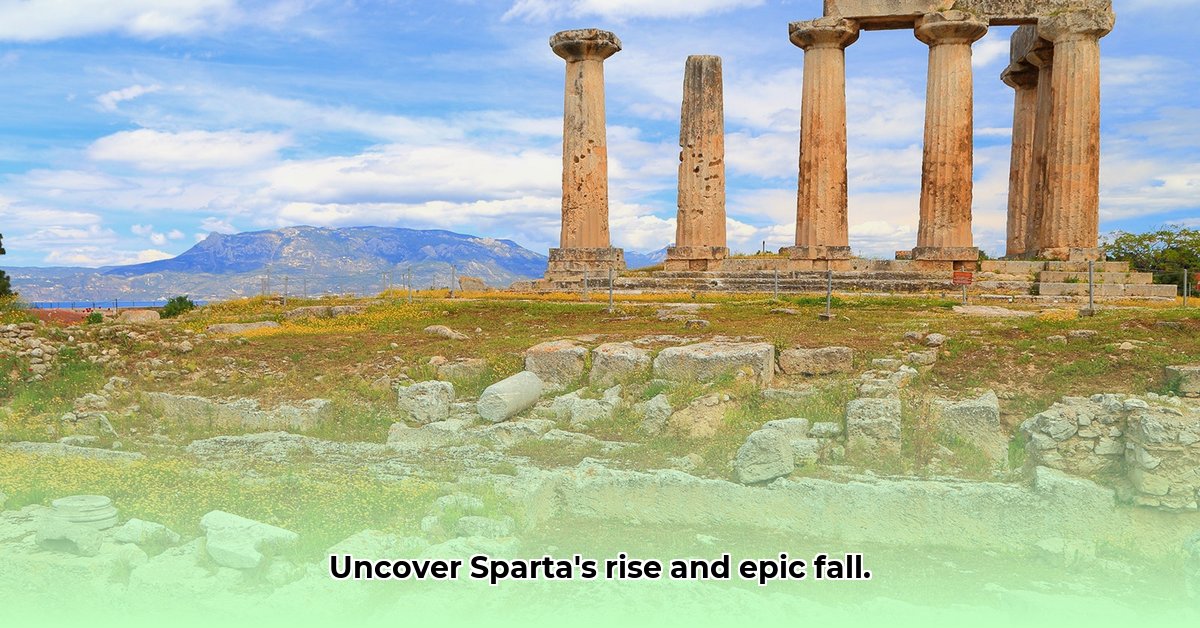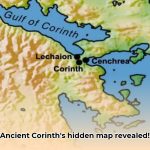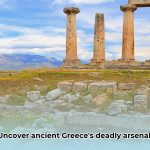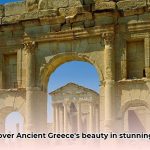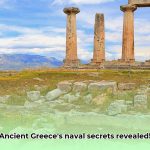Ever marvel at the tale of Sparta, the ancient Greek warrior society? This isn’t just a historical lecture; it’s a journey exploring how location influenced Sparta’s power, and ultimately, its demise. We’ll delve into their renowned military strategies, the impact of their strict society, the dynamics of their expansion, and the poignant details of their territorial losses. Prepare for an accessible, engaging narrative! For a visual understanding of the region, check out this map of ancient Athens.
The Strategic Foundation of Ancient Sparta: A Geographical Overview
Let’s begin a historical exploration, using maps of ancient Sparta as our guide. Picture a map of Greece: a landscape peppered with independent city-states, each vying for dominance. Early Sparta appears relatively small, nestled among Messenia and Arcadia. Yet, its location proved strategically advantageous. Control over key mountain passes and access to the sea offered Sparta a significant head start in the relentless Mediterranean power game. This strategic positioning, clearly visible on any map of ancient Greece, provided the bedrock for their early triumphs and military dominance.
Sparta’s rise wasn’t accidental. Their army became the stuff of legend, thanks to the rigorous agoge training regimen. These disciplined soldiers were the cornerstone of all their accomplishments. As you trace Sparta’s territorial expansion on historical maps, you’ll see the direct results of military victories, such as the celebrated, yet ultimately pyrrhic, stand at the Battle of Thermopylae. These triumphs translated into territorial gains, visually chronicling their growing influence across the Peloponnese and beyond, reaching even into Asia Minor for brief periods. But this dominance came at a steep price. We’ll explore that later.
Now, turn your attention to maps depicting later periods in Spartan history. The initial period of expansion proved unsustainable. The Peloponnesian War, a protracted and merciless conflict with Athens, severely weakened Sparta’s strength. Observe the changing map as its borders begin to contract, reflecting the loss of territories, influence, and overall power. Internal challenges only compounded these external difficulties. The Helots, a subjugated population of conquered peoples, represented a constant threat to Spartan stability. Could a more equitable social structure have prevented this dramatic decline? The map serves as a stark visual representation of Sparta’s increasing vulnerability and the steady erosion of its territorial holdings.
The Battle of Leuctra, in 371 BC, marks a pivotal turning point, a dramatic transformation. The Thebans, previously considered minor players on the Greek stage, decisively defeated the Spartans at this location. This watershed moment radically altered the map. Sparta’s territory shrunk dramatically as a direct consequence of this devastating defeat. The once-mighty empire was reduced to a mere shadow of its former self. Illustrated vividly on any accurate historical map, this decline underscores the vulnerability of even the most formidable empires to both internal and external pressures.
Beyond merely charting geographic shifts, the map vividly narrates a historical story. It’s a visual summary of a society that prioritized military prowess above all else. We can see how this singular emphasis, while initially successful, ultimately contributed to their downfall. Looking at the map, we can ask fundamental questions: What is the ideal balance between internal stability and external strength? How truly fragile are even the most powerful empires? The shifting borders of Sparta on the map offer a powerful visual answer. Did the Spartans fundamentally misjudge this optimal balance?
Let’s more closely examine the Spartan system. It features both considerable advantages, and equally significant disadvantages. Their central strength lay in their military prowess: a robust, exceptionally trained army fueled by a potent warrior ethos. This created an unusually cohesive and disciplined fighting force. However, this very rigidity also proved detrimental in the long run. Their increasing failure to adapt to new military strategies and evolving tactics gradually transformed a strength into a critical strategic weakness as their rivals, such as the Thebans, innovated.
| Feature | Strengths | Weaknesses |
|---|---|---|
| Military System | Highly disciplined and effective army; formidable warrior culture | Inflexible tactics; slow to adapt to evolving warfare; over-reliance on hoplites; limited naval capabilities |
| Social Structure | Strong social cohesion among Spartiates; clear hierarchy | Extreme inequality; brutal oppression of Helots; almost no social mobility; suppression of individual expression |
| Political System | Relatively stable governance (initially); clear lines of authority | Rigid oligarchy; unresponsive to public opinion; prone to internal power struggles; gerontocracy |
| Economic System | Control of agricultural lands; relatively self-sufficient | Reliance on Helot labor; lack of economic diversification; limited trade; stifled innovation |
The story of Sparta, as revealed through the changing borders depicted on ancient maps, defies simple categorization. It’s a multifaceted narrative of military brilliance, social rigidity, and ultimate decline. By examining the waxing and waning of Spartan power, we can gain key insights not just into the history of ancient Greece, but regarding the inherent nature of power itself, the requirements for long-term stability, and the persistent challenges of sustaining an empire across extended periods of time. Ongoing academic research continues to expand our historical understanding of Sparta, revealing new details concerning its complex society and its ultimate destiny. Examining these ancient maps isn’t just about analyzing the past; it’s about extracting valuable lessons applicable to the future.
Impact of the Spartan Agoge System on Societal Development
Returning to ancient Greece, let’s drill down into the Spartan agoge, a system whose pervasive influence shaped Spartan society, significantly impacting both its remarkable rise and its eventual, irreversible fall. The agoge can be seen as absolutely instrumental in creating Sparta’s unparalleled military strength. Imagine a society completely defined by unwavering discipline, remarkable physical strength, and an unyielding sense of loyalty. Such was Sparta, forged within the demanding crucible of the agoge.
Shaping Spartan Society
Starting at the early age of seven, Spartan boys entered the agoge. This was far more than just a school; it was a relentless, all-encompassing system specifically designed to create the ultimate warrior. Years of rigorous training, constant military drills, and harsh survival exercises transformed these young boys into hardened soldiers, deeply instilling absolute obedience and unwavering loyalty to the Spartan state. Think of it as a combination of military boot camp and indoctrination, lasting for essentially all of their formative years. This incredibly demanding system produced an army that was unmatched in its discipline and overall fighting ability. It’s hardly surprising that Sparta rose to become a dominant military power throughout the region. A large portion of the explanation lies directly with this incredibly effective (at least in the short term) training. Spartan victories on the ancient battlefield were frequently spectacular and decisive. Their tightly disciplined formations, combined with their unwavering courage, consistently struck paralyzing fear into the hearts of their numerous enemies.
The agoge not only created exceptionally capable soldiers; it profoundly shaped all aspects of Spartan society and culture. The intense, almost singular focus on military excellence permeated virtually every facet of Spartan life. Even women were trained in physical fitness and endurance, preparing them both to bear strong children and to defend their homes if necessary. For an extended period, this social and military model was incredibly successful, enabling Sparta to exert considerable influence across the broader Greek world. However, the seeds of its eventual, catastrophic downfall were sown directly within this very system. Was this extreme focus ultimately self-defeating?
Societal Rigidity
The agoge‘s almost obsessive and unwavering focus on military strength came at a considerable cost, actively stifling creativity, all forms of innovation, and essentially all intellectual pursuits beyond those directly related to military strategy and tactics. Spartan society slowly became increasingly rigid, and ultimately unable to effectively adapt to rapidly changing circumstances on the battlefield, in the political arena, and in the economic sphere. While fierce warriors are undoubtedly invaluable, they are often less adept at complex economic management or nuanced diplomatic negotiations. How could Sparta hope to maintain its long-term power and influence in an ever-changing world without the capacity for adaptation and innovation?
The agoge also significantly contributed to growing internal tensions within Sparta and the emergence of deep social divisions. The system created a sharp and largely unbridgeable divide between the Spartiates (the ruling warrior class) and the Helots (the enslaved population, who vastly outnumbered the Spartans themselves). This extreme social disparity inevitably fueled resentment and triggered occasional uprisings that severely shook the Spartan state. The constant military focus also meant that Sparta frequently neglected other vital aspects of effective governance and responsible economic management, which ultimately led to long-term vulnerabilities. A highly effective military machine needs a strong and diversified economy and exceptionally capable leadership, not just a seemingly endless supply of highly trained soldiers.
Lessons From Sparta
The agoge provides a fascinating, if ultimately tragic, case study, demonstrating how a seemingly highly effective system can paradoxically lead to its own destruction. What if Sparta had also actively nurtured creativity, valued diplomacy, and supported sustainable economic growth, in addition to its almost exclusive focus on military prowess? Would its long-term historical trajectory have been significantly different? It’s a tantalizing question that continues to haunt historical scholarship.
While the agoge undeniably created Sparta’s legendary military might, its inherent inflexibility and overall failure to effectively adapt to changing circumstances ultimately and irreversibly led to its long-term decline and eventual disappearance. The system provides valuable insights into the complex interplay between societal structures, short-term military success, and long-term societal sustainability.
Key Takeaways:
- The agoge system was demonstrably instrumental in creating Sparta’s unparalleled military strength and establishing its early dominance.
- The intense, almost singular focus on rigorous military training led directly to increasing societal rigidity and a critical inability to adapt to changing circumstances.
- Internal social divisions, stemming largely from the inherent inequalities of the agoge system and the resulting social structure, created long-term instability.
- Neglecting critical economic and diplomatic aspects severely weakened Sparta over time, ultimately contributing significantly to its irreversible fall from power.
- The agoge serves as a powerful, if cautionary, example of how a system’s initial strengths can, over time, become its most profound weaknesses, leading to eventual collapse.
Spartan Military Strategies Shaped Their Hegemony
Sparta’s extraordinary military success stemmed from a potent combination of rigorous and unceasing training, cleverly innovative (for their time) tactics, and the effective exploitation of their surrounding geography. However, their unique and rigidly hierarchical social structure, while fostering intense discipline and unit cohesion, also created long-term internal weaknesses that ultimately proved fatal.
Military Prowess: A Force of Nature
The Spartan phalanx, a tightly packed formation of heavily armed hoplites that dominated Greek battlefields for centuries, was essentially a seemingly impenetrable wall of bronze shields and razor-sharp spears, functioning as an unstoppable human wave crashing relentlessly against enemy lines. Ancient Spartan Military Strategies hinged almost entirely on this formidable formation’s raw power, using its focused, overwhelming strength to break through enemy lines and rout opposing forces. The phalanx’s considerable and undeniable success was inextricably linked to the rigorous and unceasing training of Spartan warriors from a very young age. The agoge, as discussed previously, instilled unwavering discipline and exceptional physical prowess from an almost shockingly young age. This demanding training wasn’t just about physical conditioning; it forged a profound sense of unity and shared collective purpose that was absolutely crucial to the phalanx’s overall effectiveness as a fighting force. Did this near-exclusive reliance on the phalanx formation ultimately limit their tactical flexibility as warfare evolved over time?
Geography Influences Strategy
Ancient Spartan Military Strategies and Geographic Advantages were inextricably intertwined. Sparta’s relatively isolated location in the rugged Eurotas River valley provided significant natural defensive barriers, making it extremely difficult for potential invaders to successfully advance on the city. This advantageous geographical situation greatly facilitated the development and refinement of a highly effective defensive military strategy that relied on holding strategically significant locations and funneling enemy forces into unfavorable terrain. As Spartan power expanded beyond their immediate valley, however, their continued reliance on the phalanx’s brute strength in close-quarters combat increasingly made them vulnerable to more mobile and adaptable foes, such as light infantry and cavalry.
The Agoge: Foundation of Spartan Warfare
The Spartan agoge, a system of comprehensive, state-sponsored military education, served as the very bedrock of their overall warfare capability. From the age of seven, Spartan boys underwent rigorous physical and military training that was designed to weed out the weak and forge unshakeable bonds of loyalty. Surviving this harsh and demanding environment fostered exceptional resilience, unwavering discipline, and unshakeable loyalty to Sparta, making them among the most formidable warriors in the ancient world. However, the agoge also consistently prioritized physical strength and unquestioning discipline over intellectual pursuits, which potentially hindered advancement in critical areas such as technological innovation and strategic adaptation to evolving threats from external forces. Could a more balanced educational approach have ultimately allowed for more adaptable and insightful leadership within Sparta?
Hegemony: A Rise And Fall
Sparta’s remarkable military prowess, a potent blend of expertly executed Ancient Spartan Military Strategies and Geographic Advantages, propelled them to the very pinnacle of Greek power and influence. Decisive military victories, such as the Battle of Plataea against the invading Persian forces, solidified their well-deserved reputation for near-invincibility on the battlefield. The Spartans’ significant impact was clearly evident in the geopolitical landscape of ancient Greece for centuries. However, their rigidly hierarchical social structures, their over-reliance on the traditional phalanx formation, and their consistent unwillingness to effectively adapt to evolving warfare tactics ultimately and irreversibly led to their long-term decline and eventual subjugation. The rise of Thebes under the brilliant general Epaminondas, who masterfully employed the innovative oblique phalanx formation to shatter Spartan military dominance at the Battle of Leuctra, demonstrated this critical strategic failing with painful clarity.
Lessons From Sparta
The complex legacy of Sparta continues to resonate even today. Their unwavering commitment to strict discipline, their sophisticated strategic thinking (at least initially), and their deep understanding of the fundamental importance of rigorous training highlight timeless military principles that remain relevant in the 21st century. What if, instead of relying almost exclusively on its physical strength and unwavering discipline, Sparta had proactively invested more heavily in technological advancements or adopted more flexible and adaptable tactical approaches to warfare? Could such changes have potentially altered the overall course of history? The long-term decline and eventual fall of Sparta serves as a compelling cautionary tale: even the most seemingly formidable power can falter and ultimately collapse if it consistently fails to effectively adapt to rapidly changing circumstances in the geopolitical and military arenas.
The Impact of Social Structure and Economic Factors on Sparta’s Trajectory
Sparta’s initial military successes were heavily dependent on its unique and rigidly controlled social system, especially the demanding Agoge training program and its strictly defined class system. However, their long-term economic reliance on the exploited labor of the Helots, while initially beneficial in terms of freeing up Spartiates for military service, eventually proved to be a significant hindrance to essential economic diversification and long-term societal resilience.
Forged in Iron: A Society is Built
Imagine a society built almost entirely on unyielding discipline and exceptional military prowess. That was the essence of ancient Sparta. Its initial successes were far from accidental. The intricate Spartan system, with its rigidly stratified caste structure – composed of the Spartiates, the Perioeci, and the Helots – functioned much like a finely tuned machine, with each component being seemingly essential to the overall operation of the state, yet inherently unstable due to the extreme inequalities inherent in the system. The Spartiates, the elite warrior class, were effectively owned by the state from a young age, undergoing rigorous Agoge training from their early youth. This created what was arguably the most formidable and disciplined military force in the ancient Greek world.
However, this incredibly focused approach to warfare and societal organization left very little room for intellectual pursuits, artistic expression, or essential economic diversification within Sparta. Sparta’s wealth and agricultural output were almost entirely tied to the forced labor of the Helots, a subjugated population forced to work the land under brutal conditions and with virtually no rights. This parasitic economic dependence, while ensuring a certain level of prosperity for the Spartiates in the short-term, ultimately proved to be a significant weakness in the long run, severely limiting Sparta’s ability to adapt to changing economic conditions and innovate in response to external pressures.
Conquest and Control: Expansion
Spartan military dominance wasn’t solely about exceptional warriors and their rigorous training. Their strategically advantageous location in the heart of the Peloponnese peninsula also afforded them a natural advantage, significantly facilitating territorial expansion and regional control over surrounding territories. Early historical maps clearly show Sparta’s relative size and geographic position, highlighting its strategic value in dominating the southern Peloponnese. Their initial military conquests cemented their power and influence, and their subsequent successes fueled further expansion, bringing them into frequent conflict with neighboring city-states. But this ever-increasing expansion itself created new and complex problems for Sparta. Effectively controlling a vast and resentful Helot population required constant vigilance, leading to periodic rebellions and persistent internal strife that drained Sparta’s resources and military strength over time.
The protracted Peloponnesian War against Athens, despite being initially successful for Sparta, ultimately weakened it significantly over the long term. Their eventual defeat at the hands of Thebes at the Battle of Leuctra in 371 BC, vividly illustrated by the dramatic shrinkage of Spartan territory on later historical maps, signaled the definitive beginning of the end for Spartan power and influence in the region.
Foundation Fractures: Internal Strife and Economic Problems
Sparta’s rigidly hierarchical social structure, while undoubtedly responsible for its early successes on the battlefield, ultimately became a primary cause of its eventual downfall and disappearance from history. The near-total absence of social mobility within the Spartan system, the constant and well-founded fear of widespread Helot uprisings, and a critical lack of economic diversification all combined to create an increasingly fragile and unsustainable society. Their near-exclusive emphasis on military strength and martial prowess led to a severe neglect of vital trade and commerce, making them especially vulnerable to economic shocks and resource shortages.
The Spartans’ inherent inability to effectively adapt to rapidly changing circumstances, coupled with persistent political infighting among the ruling elite, further weakened Sparta from within. They were undeniably masters of war and military strategy in their prime, but they were woefully ill-equipped to handle complex economic challenges or to navigate the ever-shifting currents of political change in the ancient Greek world. This rigid and inflexible structure, while arguably effective in the short term, eventually proved to be a fatal flaw that led directly to their long-term decline and eventual subjugation by external forces.
Myths and Realities: The Warrior Society
Sparta’s historical legacy is both complex and often contradictory. It’s frequently romanticized in popular culture as a paragon of military virtue and an exemplary “warrior society” that valued unwavering discipline and selfless service above all else. Yet, this simplistic and often idealized image conveniently ignores the brutal realities of their society, the extreme levels of social inequality inherent in their system, and the ultimately unsustainable nature of their parasitic economic model. While their considerable military achievements are undeniable and well-documented, their rigid social and economic structures ultimately sowed the seeds of their own long-term destruction.
- Rediscover the Bad Girls of Ancient Greece: A Feminist Retelling - August 9, 2025
- Discover Ancient Greece Weapons: A Comprehensive Guide to Military Technology - August 8, 2025
- Discover Ancient Greek Swords: A Comprehensive Guide - August 8, 2025
